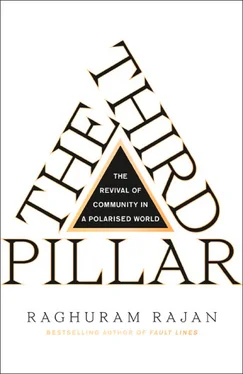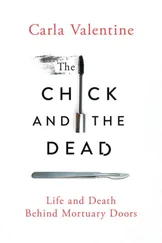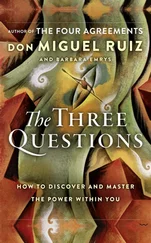Eventually, the Church’s wealth made it a target for the state. As critics attacked the Church during the Protestant Reformation, monarchs seized an opportunity to cut the Church down to size, and it was rarely a factor in governance again.
The Black Death
In October 1347, twelve Genoese trading ships docked at the Sicilian port of Messina after a long journey through the Black Sea. Many of the sailors on board were dead, covered with black boils that gave the illness its name, the Black Death. The Sicilian authorities ordered the ‘death ships’ out of the harbor, but it was too late. Over the next five years, and over the course of subsequent recurrences, the bubonic plague pandemic would wipe out an estimated third of Europe’s population.
The humanitarian catastrophe had a thin silver lining. The lucky peasantry that survived the Black Death now could farm much larger land holdings, could concentrate on better land, and were thus significantly richer. For instance, in 1341 in the English village of Stoughton, 52 per cent of landholdings were eleven acres or less. By 1477, only 16 per cent were that size, with 58 per cent of holdings larger than thirty acres. 20With many in the community becoming more prosperous, life became less precarious, and the need for emergency consumption loans and Church charity diminished.
The poor were still around, albeit fewer in number. Fortunately, with more people possessing surplus resources, competition to lend to those in adversity increased. With vast tracts of now-untilled land as well as commercial opportunities in towns beckoning the poor, the extremes in bargaining power that might have led to debt bondage no longer prevailed. Indeed, across much of Western Europe, the Black Death precipitated the end of serfdom. 21Greater prosperity and competition to lend that prosperity now diminished the old rationales for prohibiting usury.
As we will see throughout the book, natural or economic catastrophes and technological progress are the big drivers of societal change. After the Black Death, technological progress took over. Francis Bacon, the seventeenth-century courtier and philosopher, saw gunpowder, printing, and the compass as the three greatest inventions known to man. 22Their arrival in the West played a part in the expansion of markets, and the further weakening of the feudal community as well as the Catholic Church. They also heralded the rise of the nation-state, a key player in our narrative.
CANNONS AND INTERNAL COMMERCE
In feudal Europe around the turn of the first millennium, all that it seemed to take to create a self-sufficient political entity – it would be too much to call this a state – were fortified walls and a retinue of armed men. Indeed, often the first use of the independent taxation authority a town received was to build a strong wall – a policy that still appeals to some of our politicians. 23In the fourteenth century, by some counts there were over one thousand separate political entities in Europe. 24Each entity levied its own duties, taxes, and tolls, especially on goods crossing its borders, which increased the cost of transporting goods over long distances. These were just the legal impediments to commercial traffic; entrepreneurial lords could indulge in their own banditry, while sea captains could engage in piracy. If you drive alongside the Rhine near Frankfurt today, you will see the castles of the original robber barons at regular intervals, though today they only relieve tourists of their money, and in a far more civilised way than in the past. All these impediments ensured that the size of the market any producer could safely and profitably access was quite small – often only within the borders of the little political entity he resided in.
The cannon changed everything. The Chinese invented gunpowder, but it was the Europeans who fully discovered and developed its destructive potential. At the battle of Crecy in 1346, English bowmen used small bombards, which, primed with gunpowder, shot little iron balls to frighten enemy horses. 25A hundred years later, massive siege cannons could demolish even the strongest fortifications. Techniques of fortifying changed in response, so the net effect of the cannon was to increase both the cost of attack and of defense.
Military techniques also changed. Cannonballs and musket fire could slaughter charging armored knights on horseback. However, muskets took time to reload, which meant an experienced musketeer even in the beginning of the seventeenth century could shoot a round only once every two minutes. 26Against a cavalry charge, this meant essentially only one shot between the enemy coming into range and the commencement of hand-to-hand combat. The tactical solution was to have musketeers drawn up in long parallel lines, with the first line firing then stepping behind the second to reload, and so on, so that near-continuous volleys of fire could be directed at the enemy. To be effective, the army needed many more recruits with substantial drilling and discipline, which meant a large standing army. 27The size of armies of some states increased tenfold between 1500 and 1700. 28
To afford both cannonry and an army, any political entity required a larger catchment area, both to find peasant recruits and to find taxes to pay their bills. Little political entities no longer had the population nor could afford the minimum necessary expenditure. The average size of the state increased as entrepreneurial rulers started integrating smaller entities in the fifteenth century, and by the end of the century, the number of entities had halved to around five hundred. By 1900, these were down to twenty-five or so. 29
The expansion in the size of the political state also meant an expansion in the size of its domestic market. Monarchs increasingly obtained monopoly control over violence within their country by controlling the powerful landed magnates, a subject we will explore in greater detail in the next chapter. They also suppressed the entrepreneurial robber barons and pirates, making trade routes safe.
This meant that producers could sell in the entire national market. Moreover, in the thirteenth and fourteenth centuries, aids to navigation like the dry compass and the astrolabe, coupled with new technologies in ships such as multiple masts with lateen sails and the sternpost-mounted rudder, which improved ship maneuverability and stability, meant ships no longer had to hug the coast, and could venture much farther out at lower risk. This expanded trade, and thus added to the size of the accessible market. With larger available markets, producers could specialise, as well as raise the scale of their production, thus reducing unit costs of production. As the prices at which they were willing to sell fell, demand for goods increased.
In sum, political consolidation led to economic integration. When combined with maritime technological innovation that allowed trade with more distant land, producers could now exploit economies of scale. European production of crafts and manufactured goods, centered in towns and cities, expanded. And as markets delivered all manner of goods, the manor too specialised, with some focusing on cash crops like grapes, transformed into wine, instead of the earlier emphasis on necessities like cereals – for cereals could now be bought with the money obtained from selling wine. 30
The increase in production and trade played an important role in weakening the case against usury. A master craftsman or merchant wanting to borrow to finance an expansion in his business or trade was not in the sympathetic position of an illiterate peasant living at the margin of starvation. As the community turned from consumption loans to small production or trade loans, public attitudes toward usury became more favourable. After all, it seemed only fair that those who sought commercial loans to make profits should pay a share of their profit out as interest.
Читать дальше












